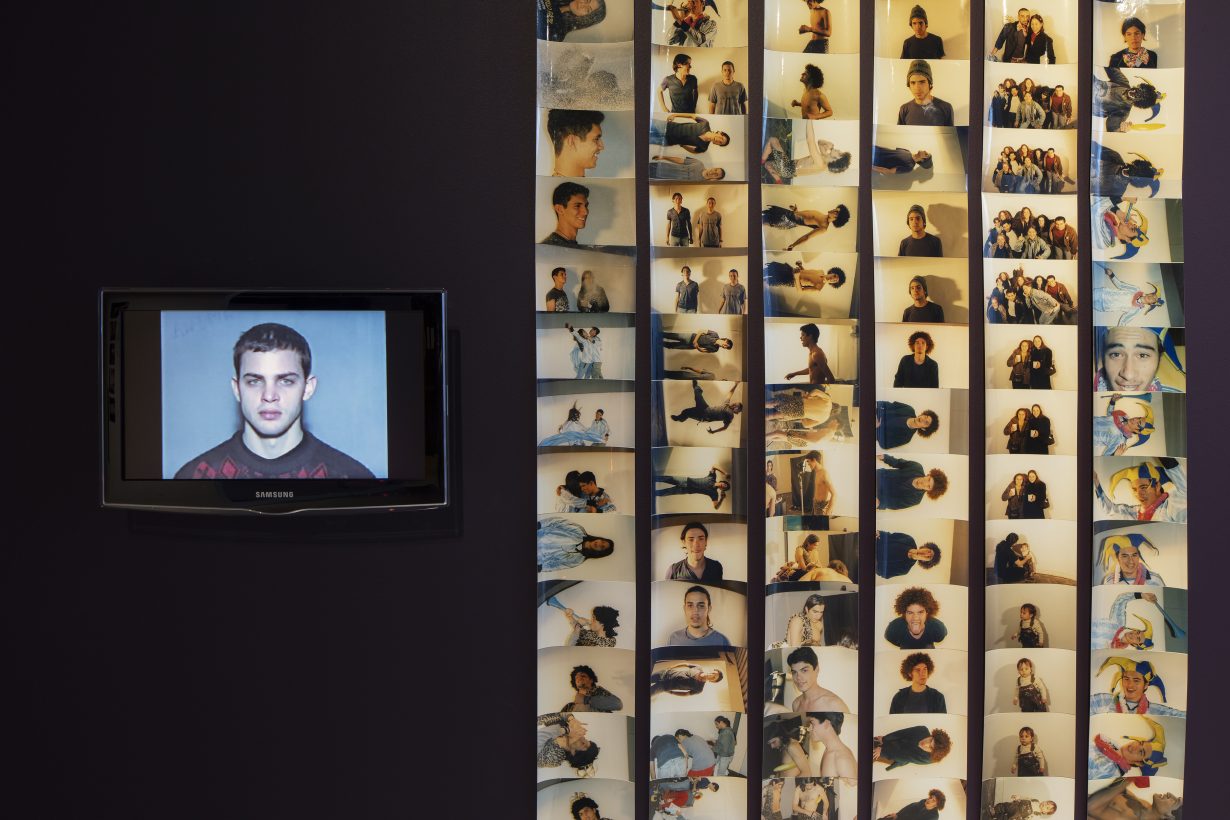A new show at Museo Universitario del Chopo, Mexico City captures a time and a place through a legend of Buenos Aires
Roberto Jacoby is quite a legend in Buenos Aires. He was part of the Di Tella generation that pioneered conceptual and media art during the 1960s; he was involved in Tucumán Arde and Experiencias ’68, two 1968 exhibitions that were crucial in the political art history of the region; he was behind the concept for Revista Ramona, a beloved art magazine that ran for ten years until the 2010s; and he directed the Centro de Investigaciones Artísticas, an influential site for artistic research and pedagogy in the Argentinian capital. His prints are everywhere in the local artworld of the last six decades. This show explores what might appear to have been his ‘slower’ years – he quit making art in 1968 and only came back to it in 1988 – but were quite the opposite: Jacoby remained active as a lyricist for the iconic rock band Virus, acted in theatre plays, threw parties. Democracy didn’t return to Argentina until 1983, and he worked in particular on putting back together a community that had been torn apart by the dictatorship.
The exhibition dedicates a lot of space to his collaborations with Virus, his sexy, funny lyrics framed on lengths of the walls. Jacoby would photograph the crowds at their concerts, and the energy is palpable, boundless and so, so young. There’s a similarly raucous documentation of Body Party (1988), an ‘exhibition-pageant’ in which attendants could compete for $200 and the chance to become famous in and for 15 seconds: all one had to do was dress as a ‘living, breathing’ work of art. The results vary from the beautiful and baroque, to cute girlies prancing around naked. The jury included Argentinian painter Marcia Schvartz and the famed art critic Pierre Restany, who happened to be in town, and whom local artist and curator Jorge Gumier Maier describes as ‘slightly drunker than the rest, and with evidently foreign manners’ – ie, he was way too touchy.

At times the show feels a little stiff, like it could have afforded to be more fun, more focused on experience; to reduce such lively scenes to vitrines seems unfair to the source material. Yet the kitschy power of the art object and its indisputable capability to produce experience manages to exceed this. This is evinced in the installation that lends its title to the show, Huyamos a Buenos Aires, nadie podrá encontrarnos (Let’s Run Away to Buenos Aires, Nobody Will Find Us, 1988/2023), reproduced almost exactly as it was shown in 1988. A small stage adorned with a projected image of the Buenos Aires Ecological Reserve, a place where cruising and queer life managed to exist during the dictatorship years; two photographs of a nude Jacoby in the same pose, taken 20 years apart; a ceramic statue of a shaggy dog suspended on a little platform; a cascade of purple chiffon and an old-school electric fan to keep it flowing. It is an exercise in absurdity, a delightful commentary on the passage of time and on what manages to stay the same. The piece is so funny, so charming, it succeeds at representing experience beyond discursivity – precisely what escapes the archive: joy and sexiness.
In a section of texts from the 1980s, typed out by the artist in a mixed style of diaristic and cerebral, he declares the need for a ‘philosophy of the instant’ as the most adequate means to deal with the world. I wonder if an archive isn’t the opposite of that, but some lines later Jacoby presciently concludes, ‘We are animals transmitting eternity. That’s the idea.’ And in a way the show manages to do that, to capture the wildness and brilliance of a time and place, as seen through the eyes of one of its protagonists, who was there to catalyse so many of its moments, to experience them and then to transmit them to the rest of us.
Huyamos a Buenos Aires, nadie podrá encontrarnos at Museo Universitario del Chopo, Mexico City, through 15 October
